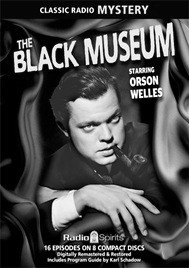
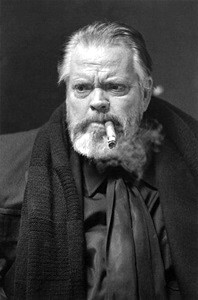 “The Black Museum. A Repository of Death. Here in the grim stone structure on the Thames which houses Scotland Yard is a warehouse of homicide, where everyday objects . . . all are touched by murder.”
“The Black Museum. A Repository of Death. Here in the grim stone structure on the Thames which houses Scotland Yard is a warehouse of homicide, where everyday objects . . . all are touched by murder.”
The Black Museum (1952) aired “The Door Key” (in the United States and as near as historians can reasonably ascertain) on March 18, 1952, as the 12th of the show’s 51 episodes. This is the 12th episode we’ve run of the show since the first in 2018 and only the fourth since September of 2021, the last coming in September of last year, so a bit of background is in order for newcomers to this sometimes grisly program. First of all, the name the Black Museum was coined in 1877 by a reporter for London’s The Observer newspaper, though the museum had opened in 1875 with the official name of simply the Crime Museum. It is the oldest museum in the world to display only artifacts of crime and is still known today by its official name of the Crime Museum despite the more colorful name given it by The Observer. The museum is not open to the public and is used primarily for instructional purposes for police training, but has had special visitors the likes of Sir Arthur Conan Doyle.
The Black Museum was one of four similar shows produced by Harry Alan Towers (1920-2009) under his Towers of London label in the late 1940s and early 1950s. Towers, a native born Britisher, would also produce popular radio fare like Secrets of Scotland Yard, Fabian of the Yard, and WHItehall 1212. All four shows centered around stories from the files of Scotland Yard, and New Scotland Yard’s famous Crime Museum, which was popularized in crime novels as the Black Museum. While all but Fabian of the Yard are verified as being produced and syndicated in Britain for future syndication, it is interesting to note that, according to the Digital Deli Too website entry, “WHItehall 1212 was a National Broadcasting Corporation production written by Lights Out’s famous scriptwriter Wyllis Cooper….” Three of the four shows, The Black Museum among them, would wrap their stories around an artifact from the museum, recounting in dramatic form the infamous crime associated with said artifact. Secrets of Scotland Yard kept to historical facts quite closely, and while a fascinating listen and quite popular, didn’t have the flair or melodramatic effect the likes of Orson Welles (1915-1985) would bring to The Black Museum as the host and narrator of each of its 51 episodes. And while The Black Museum also kept to the historical record surrounding each case, it would play a little fast and loose with them (or perhaps embellish them is the proper word) for dramatic effect, and it didn’t hurt that the show–-unlike the others–-drew its material solely from murders, thus guaranteeing the audience a chilling half hour. Overlay the grim stories with the somber, virtually hypnotic tones of Orson Welles and you’ve got a winner.
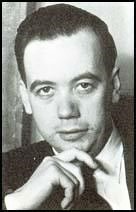
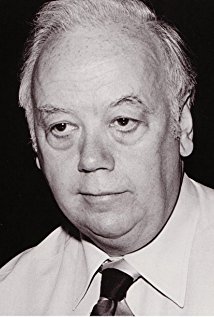 Speaking of Orson Welles, one might be given to wonder how he came to write some of, and host and narrate all of the episodes of The Black Museum, which were produced in the UK. It seems that Welles decided to take an extended “vacation” in England due to several professional and personal problems, including some “requests” from the Internal Revenue Service. So the American loss turned into Harry Alan Towers’s gain (Towers’s photo at left 1948, at right circa 1984), and he set Welles to work, a profitable solution for both parties. Welles would also work on two other Towers productions, perhaps the most well known to the American radio audience being The Lives of Harry Lime (or The Third Man.) The Third Man was a 1949 film noir British production set in post-World War II Vienna, with Welles playing the Lime character. Written by Graham Greene, it has attained classic status for its stylish portrayal of a decaying and corrupt Vienna, so Towers was striking while the iron was hot and rode the coattails of the film with Welles starring in the radio adaptation.
Speaking of Orson Welles, one might be given to wonder how he came to write some of, and host and narrate all of the episodes of The Black Museum, which were produced in the UK. It seems that Welles decided to take an extended “vacation” in England due to several professional and personal problems, including some “requests” from the Internal Revenue Service. So the American loss turned into Harry Alan Towers’s gain (Towers’s photo at left 1948, at right circa 1984), and he set Welles to work, a profitable solution for both parties. Welles would also work on two other Towers productions, perhaps the most well known to the American radio audience being The Lives of Harry Lime (or The Third Man.) The Third Man was a 1949 film noir British production set in post-World War II Vienna, with Welles playing the Lime character. Written by Graham Greene, it has attained classic status for its stylish portrayal of a decaying and corrupt Vienna, so Towers was striking while the iron was hot and rode the coattails of the film with Welles starring in the radio adaptation.
The airing of The Black Museum episodes presents problems for historians. Produced in 1950, it was first aired as a “pirate broadcast” by Radio Luxembourg, and then throughout Europe. It was eventually licensed by MGM Radio Attractions and ran in the United States under the Mutual Broadcasting System (MBS). MGM hand-picked what it considered to be the best 39 of the original 51 episodes and ran them from January 1, 1952 through December 30, 1952 (with a three month hiatus while a summer replacement filled the gap).There’s more to the odd packaging and eventual airing of select episodes of The Black Museum (Canada’s CBC radio would also purchase some 38-39 episodes and air them at different times than the American run, for but one example), but all of that is neither here nor there for our current purposes.
“The Door Key” tells the tale of how a murderer was found by Scotland Yard, and the deductive process ingeniously applied in the capture of the murderer. The scene is a flat in a hotel where an unknown visitor is waiting for a Mr. Regan, a travelling businessman who is out for the evening. The next morning the hotel maid finds Mr. Regan shot dead on the floor of his room and no sign of the visitor. One of the random items the police find is on the floor next to the deceased’s body. It is a common key (owned by the late Mr. Regan for all they know), the rather plain sort not unusual to find in London, though uniquely cut to fit only a specific lock. How the police must work backwards from this isolated and otherwise unremarkable key, tracing it to the killer, is not only testament to the skill of the actual police working the case at the time, but also the skill of the writer in dramatizing this real life murder case for a radio audience. So sit back, make yourself comfortable, and marvel at how the most innocuous, ordinary object imaginable is the key to solving a murder most foul.
(The CD linked at top includes this episode and 15 others, all digitally remastered and restored, and features a program guide by old time radio historian and friend to this weekly Tangent feature Karl Schadow.)
Play Time: 29:06
{Airing on a Tuesday near the middle of March 1952, the neighborhood gang could hardly wait for school to end the next day, then head for the nearby newsstand, hopefully to find more stories to challenge their burgeoning detective skills like “The Door Key” had done the night before. Famous Detective Stories (1938-57) seemed like a good bet, but the magazine was probably best remembered for its 8 title changes (Crack Detective and Hooded Detective among them) than it was for its competent, but generally unremarkable stories. It sported the Famous Detective Stories title from 1950-57 and was a quarterly in 1952. Famous Fantastic Mysteries (1939-53) featured classic fantasy and scientific stories mostly from the years before there were any actual SF or F magazines. It was an immediate success thanks to its astute editor, Mary Gnaedinger, who rescued from possible oblivion many time-proven classics for new generations of eager readers. It was a bi-monthly in 1952. The Phantom Detective (1933-53) was launched in direct response to Street & Smith’s fantastically profitable The Shadow magazine in April of 1931. While a successful gamble (though with not quite the numbers as its elder rival), the powers that be at The Phantom Detective played their cards right and in the end turned their masked single-character pulp magazine hero into the longest running magazine of its kind in pulp history. It was a quarterly in 1952.}
[Left: Famous Detective Stories, 2/52 – Center: Famous Fantastic Mysteries, 2/52 – Right: The Phantom Detective, Winter/52]
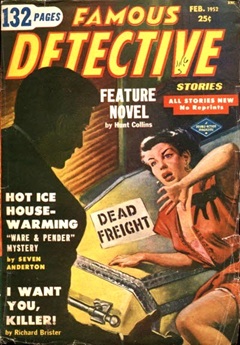
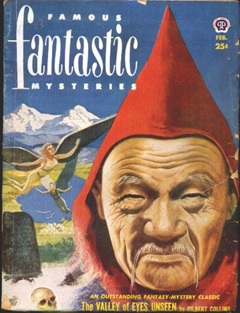
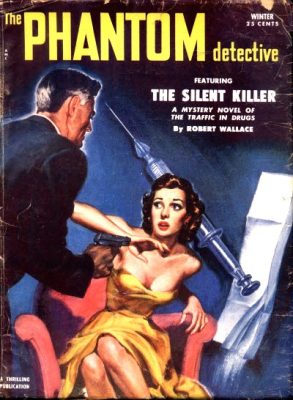
To view the entire list of weekly Old Time Radio episodes at Tangent Online, click here.